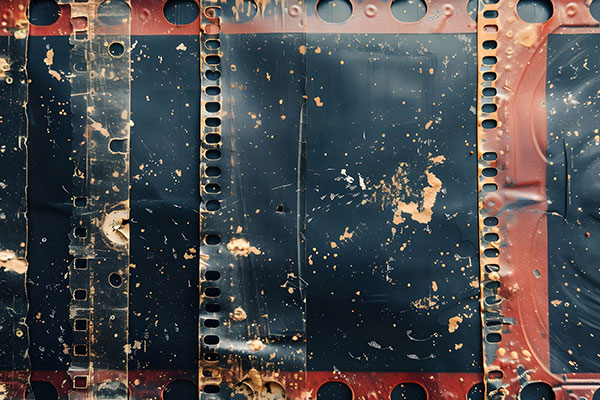Managing Microfilm Affected by Vinegar Syndrome: Preservation Tips and Strategies

If you’ve ever encountered a strong vinegar smell while handling microfilm, you might be dealing with vinegar syndrome. This condition, caused by the degradation of acetate film base, can threaten the longevity of valuable archival materials. Understanding how to manage and mitigate vinegar syndrome is crucial for preserving your microfilm collections.
What is Vinegar Syndrome?
Vinegar syndrome is a chemical reaction that occurs in acetate film, producing acetic acid and a characteristic vinegar odor. This degradation not only affects the film’s usability but can also spread to other materials. Key signs of vinegar syndrome include:
- Odor: A strong vinegar-like smell.
- Physical Changes: Brittle, shrunken, or buckled film. Channeling, where the film base separates from the emulsion, may also occur.
- Visual Deterioration: Discoloration, fading, or surface crystallization.
According to the Image Permanence Institute’s Storage Guide for Acetate Film, acetate film degradation can start to occur within 50 years of production, though this varies based on storage conditions.
Immediate Steps to Take
- Isolation: Quickly separate affected microfilm from unaffected materials to prevent cross-contamination.
- Ventilation: Ensure affected microfilm is stored in a well-ventilated area to help dissipate the acetic acid vapor.
Preservation and Storage
Proper storage is key to slowing down vinegar syndrome. Here’s how to create an optimal environment:
- Cool and Dry Conditions: Store microfilm in conditions below 65°F (18°C) and with relative humidity between 30-40%. These conditions significantly slow down the degradation process.
- Freezing: For severely affected microfilm, freezing can halt deterioration. This temporary measure requires careful packaging to prevent further damage from condensation.
Restoration and Duplication
- Professional Assessment: Consult a professional conservator to assess damage and recommend restoration procedures.
- Digitization: Digitize affected microfilm as soon as possible. High-resolution scanning preserves the information and ensures it remains accessible.
- Duplication: Create new microfilm copies using polyester-based film, which is more stable and less susceptible to vinegar syndrome.
Long-Term Care
- Regular Monitoring: Regularly inspect stored microfilm for early signs of vinegar syndrome. Use tools like A-D Strips (acid-detection strips) to monitor acetic acid levels.
- Improved Storage Solutions: Invest in archival-quality storage solutions, including acid-free containers and well-ventilated shelving.
Professional Services
Professional archival services and conservators offer tailored solutions for managing vinegar syndrome. These experts have the equipment and expertise necessary for handling and duplicating degraded film, ensuring long-term preservation .
Conclusion
Managing microfilm affected by vinegar syndrome requires immediate action and expertise. CASO Document Management specializes in environmental controls and digitization to preserve your valuable microfilm. Consult with us to safeguard your collections and ensure their longevity for future generations. Trust CASO for comprehensive solutions to protect your archives.
“The CDM team has been exceptional. They completed the work faster and cheaper than we could have, and have always accommodated our needs. It is a pleasure working with them.”
Richard Ajimati – SUNY Downstate Medical Center
Get a Quote
Fill out the form below to get in touch with us. We’ll get back to you right away.
Other contact options:
888-388-2276
info@caso.com




